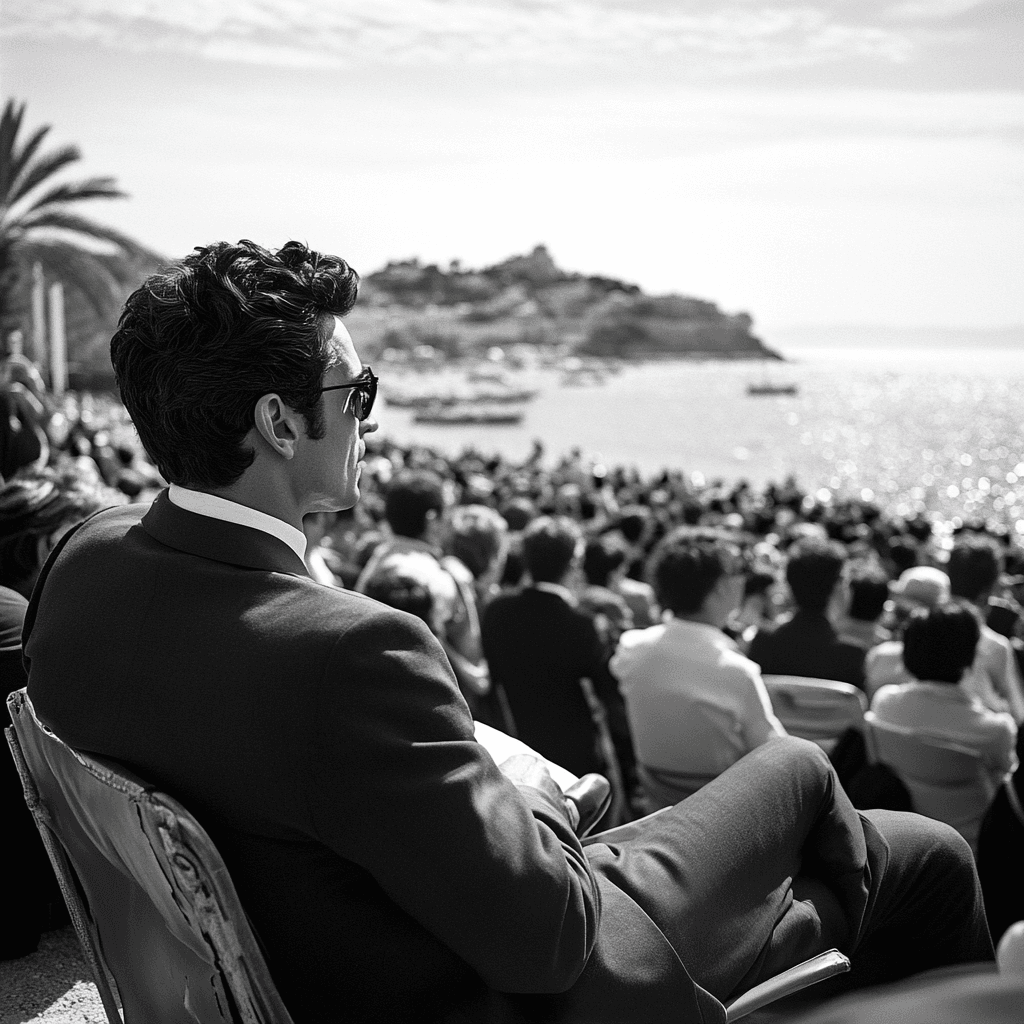The iconic red-carpeted 24 steps of the Cannes Film Festival have become the epicenter of global cinema each spring. Surmounted by the official poster weighing 145 kilos atop Le Palais des Festivals et des Congrès, this famous staircase embodies the highest quality of seventh art, showcasing talent from directors worldwide.
The Cannes Film Festival has evolved from its politically charged 1939 origins into a prestigious global showcase of cinema. Officially launched in 1946, it has grown to celebrate innovation and diversity in film, introducing key structures like the Palme d'Or and various competitive sections, including "Un Certain Regard" and "Cinéfondation." The festival's vibrant atmosphere merges industry and artistry, shaping cinematic trends and distribution patterns while highlighting prominent and emerging talents from around the world. The next edition runs from May 14-24, 2025.
The Festival’s journey hasn’t always been smooth sailing. Initially conceived as a counter to Mussolini and Hitler’s influence over the Venice Film Festival, Cannes’ first attempt in 1939 was canceled. What’s less known is that this prestigious event almost found its home in Biarritz instead of Cannes. The small Côte d’Azur fishing village fought determinedly to host what would become one of the world’s most celebrated film festivals, scheduled for May 14-24, 2025.
Table of Contents
The History of the Cannes Film Festival
The Cannes Film Festival emerged from tumultuous political circumstances in the late 1930s, evolving into cinema’s most prestigious celebration over seven decades. Its development reflects shifting artistic movements, international politics, and the transformation of film as both art and industry.
Origins and Evolution
The Cannes Film Festival’s roots trace back to 1939 as a direct response to fascist interference in the Venice Film Festival. When Mussolini and Hitler exerted political control over Venice’s prize selections, French officials—led by Jean Zay, Minister of National Education and Fine Arts—proposed creating an alternative international film showcase committed to artistic freedom.
While Cannes secured hosting rights, the inaugural festival faced immediate challenges. The municipality of Cannes, then a small Côte d’Azur fishing village, competed vigorously against Biarritz to host the event. Despite completing preparations and scheduling the first festival for September 1, 1939, world events intervened—Germany invaded Poland on that exact date, triggering World War II and forcing cancellation.
The festival finally launched in 1946 in post-war France. Twenty-one countries participated in this first successful edition, presenting films like Roberto Rossellini’s “Rome, Open City” and David Lean’s “Brief Encounter.” The early years established Cannes as a celebration of international cinema, though it operated differently than today’s format—multiple films received equal “Grand Prix” recognition rather than the competitive structure that later emerged.
Throughout the 1950s and 1960s, the festival cemented its cultural significance. The Palme d’Or—the festival’s highest prize—was introduced in 1955, replacing the Grand Prix and establishing the award hierarchy that continues today. This period coincided with the rise of auteur theory and European art cinema, with directors like Ingmar Bergman, Federico Fellini, and Michelangelo Antonioni gaining international recognition through Cannes screenings.
The festival’s seven-decade history divides into distinct artistic and organizational periods that reflect broader movements in cinema. The 1960s marked Cannes’ emergence as a platform for revolutionary filmmaking, culminating in the historic 1968 festival. That year, filmmakers including François Truffaut and Jean-Luc Godard halted the event in solidarity with student and worker protests in Paris, forcing the festival to end prematurely without awarding prizes.
Following this disruption, Cannes restructured in the 1970s, introducing two parallel sections: Directors’ Fortnight and Critics’ Week. These additions expanded the festival’s scope beyond mainstream competition films, creating space for experimental, independent, and emerging filmmakers to showcase their work.
The 1980s and 1990s witnessed Cannes’ growing commercial influence alongside its artistic prestige. The Marché du Film (Film Market) expanded significantly during this period, transforming Cannes into both a cultural and business hub where distributors acquired films for international release. Films premiering at Cannes increasingly gained mainstream success, with Palme d’Or winners like “Pulp Fiction” (1994) achieving both critical acclaim and commercial popularity.
In recent years, Cannes has faced challenges adapting to industry disruption while maintaining its traditional focus on theatrical cinema. The festival initially resisted including streaming platform films in competition but has gradually modified its stance while still requiring French theatrical distribution for competing titles.
The 2020 festival marked a significant disruption when the COVID-19 pandemic forced cancellation of the physical event for the first time since 1968. Organizers pivoted to announcing an official selection without holding screenings, labeling chosen films with the “Cannes 2020” designation to help them secure distribution and recognition.
The festival returned in 2021 with heightened significance for the film industry, presenting Bong Joon-ho’s “Parasite” which later became the first non-English language film to win the Academy Award for Best Picture. This watershed moment demonstrated Cannes’ continued influence as a tastemaker and platform for international cinema.
Each May, approximately 39,000 film professionals and enthusiasts ascend the 24 red-carpeted steps of the Palais under global media attention. These iconic stairs, crowned by a 145-kilogram official festival poster, have become cinema’s most recognizable symbol—representing both artistic achievement and the glamour that surrounds the twelve-day celebration.
From its political origins in 1939 to its current status as cinema’s preeminent showcase, the Cannes Film Festival reflects seven decades of film history and continues shaping cinema’s future as it approaches its 2025 edition scheduled for May 14-24.
The Festival Structure
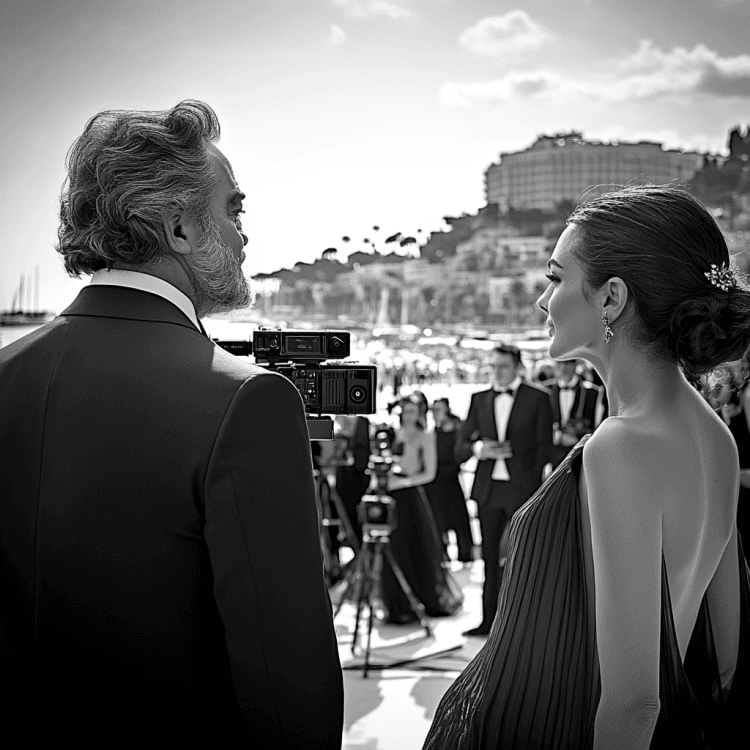
The Cannes Film Festival operates through a complex organizational framework divided into distinct sections managed by five separate organizations. This prestigious event features a main Official Selection alongside 12 specialized categories, each representing different aspects of global cinema and filmmaker development.
Official Selection Categories
The Official Selection forms the centerpiece of the Cannes Film Festival, showcasing films across multiple competitive and non-competitive sections. Films selected for the “In Competition” category vie for the coveted Palme d’Or and premiere in the iconic Théâtre Lumière. The “Out of Competition” section presents notable films exempt from award consideration but still honored within the Official Selection lineup.
“Un Certain Regard” celebrates innovative storytelling and experimental filmmaking techniques with strict eligibility requirements. Films must be produced within 12 months of the festival and remain unreleased at any international event prior to their Cannes premiere. This category offers a platform for unconventional narratives that push cinema’s boundaries.
The “Cinéfondation” section spotlights student filmmakers, featuring works created as part of film school curricula. Eligibility criteria include a runtime between 35 and 60 minutes, production within 18 months of the festival, and no previous screenings at international film events. This category nurtures emerging talent and introduces fresh perspectives to the festival audience.
Short films under 15 minutes compete in a dedicated category with similar rules to feature films but without the French theatrical release requirement. These concise works demonstrate storytelling efficiency and often serve as launching pads for directors’ careers.
Beyond the Official Selection, parallel sections like “Critics’ Week” and “Directors’ Fortnight” operate independently while maintaining association with the festival. These sections typically showcase first or second films from promising directors, creating discovery platforms for innovative voices in cinema.
Awards and Prizes
The Cannes Film Festival distributes several prestigious awards determined by internationally appointed juries comprising artists, film industry professionals, journalists, students, and critics. The Palme d’Or stands as the festival’s highest honor, awarded to the best feature film in the Official Competition and recognized globally as a mark of cinematic excellence.
The Grand Prix recognizes feature films demonstrating exceptional originality and intellectual curiosity, often considered the festival’s second most prestigious award. The Jury Prize highlights outstanding films or performances that captivated jury members through unique artistic merit or powerful emotional impact.
Individual achievement awards include Best Actor and Best Actress recognitions for standout performances, the Best Director award honoring exceptional vision and execution, and the Best Screenplay prize acknowledging superior writing in either original or adapted form.
The Caméra d’Or celebrates excellence in debut filmmaking across all festival sections, while the Palme d’Or du Court Métrage honors the most outstanding short film. The Prix Un Certain Regard specifically rewards innovative works screened in the Un Certain Regard section.
Juries for each section meet annually during the festival to evaluate entries and select winners through a collaborative deliberation process. The festival’s board of directors appoints these juries to ensure diverse perspectives in the evaluation process, maintaining the festival’s reputation for artistic integrity and discovery of significant cinematic achievements.
The Palme d’Or
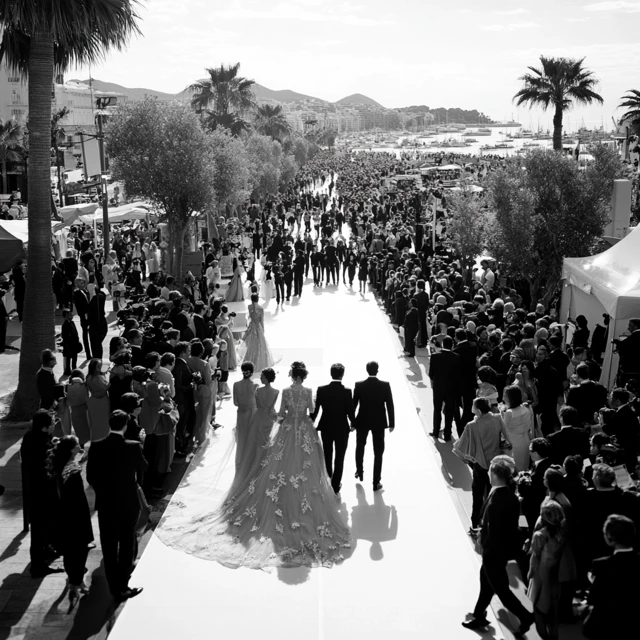
The Palme d’Or represents the highest honor at the Cannes Film Festival, serving as a prestigious symbol of cinematic excellence since 1955. This coveted award replaced the earlier Grand Prix du Festival International du Film and features a design created by Lucienne Lazon, inspired by Jean Cocteau’s sketch depicting a palm tree—a tribute to Cannes’ coat of arms.
Notable Winners Through the Years
The Palme d’Or’s legacy began when Delbert Mann received the inaugural award in 1955 for “Marty.” This milestone marked the beginning of a tradition that continues to recognize exceptional filmmaking across decades.
Robert Altman’s “MAS*H” captured the award in 1970, presenting a satirical take on the Korean War that many interpreted as commentary on Vietnam. The film’s win illustrated how Cannes embraces politically resonant cinema that addresses contemporary issues through artistic expression.
A breakthrough moment occurred in 1993 when Jane Campion became the first female director to win the Palme d’Or for “The Piano.” Her accomplishment shared the spotlight with Kaige Chen’s “Farewell My Concubine,” as both films received the top honor that year. Campion’s win represented a significant step forward for women filmmakers in an industry historically dominated by men.
The Coen brothers made Cannes history in 1991 when “Barton Fink” achieved an unprecedented sweep of three major awards: the Palme d’Or, Best Director, and Best Actor. This spectacular triumph prompted festival organizers to implement new rules preventing future films from dominating multiple major categories simultaneously.
Despite rule changes limiting multiple wins, Michael Haneke’s “The Piano Teacher” demonstrated exceptional quality in 2001 by securing the Grand Prix along with both Best Actor and Best Actress awards. This rare achievement under the new guidelines further cemented Haneke’s reputation as a master filmmaker.
Beyond these examples, films like Bong Joon-ho’s “Parasite” and Justine Triet’s “Anatomy of a Fall” demonstrate the Palme d’Or’s continued prestige and influence. “Parasite” went on to win Best Picture at the Academy Awards, highlighting the award’s ability to identify films with universal appeal and artistic merit.
Impact on Filmmakers’ Careers
Winning the Palme d’Or transforms directors’ professional trajectories in multiple significant ways. The award opens doors to international recognition, immediately elevating filmmakers to global prominence and generating substantial industry attention.
Career advancement often follows a Palme d’Or win, as demonstrated by Jane Campion’s experience after “The Piano.” Her victory established her as a major talent in world cinema, creating opportunities for future projects and cementing her place among distinguished directors.
The visibility increase for Palme d’Or recipients extends beyond critical acclaim to practical benefits. Winners typically secure enhanced distribution deals, broader theatrical releases, and improved positions when negotiating funding for subsequent films. This practical advantage helps directors pursue more ambitious creative visions.
The historical significance of joining the Palme d’Or winners’ circle places filmmakers alongside legendary directors like Federico Fellini, Francis Ford Coppola, and Wong Kar-wai. This association with cinema’s greatest talents creates a lasting legacy that extends throughout a director’s career and beyond.
For many international filmmakers, the award serves as an entry point to wider audiences, bringing attention to cinema from countries and perspectives that might otherwise remain undiscovered by global viewers. This democratizing effect helps diversify the cinematic landscape by elevating voices from various cultural contexts.
The prestige of the Palme d’Or continues to grow as recent winners like “Parasite” and “Anatomy of a Fall” achieve further success at major awards ceremonies, reinforcing the Cannes jury’s ability to identify groundbreaking cinema that resonates with both critics and audiences worldwide.
Beyond the Red Carpet
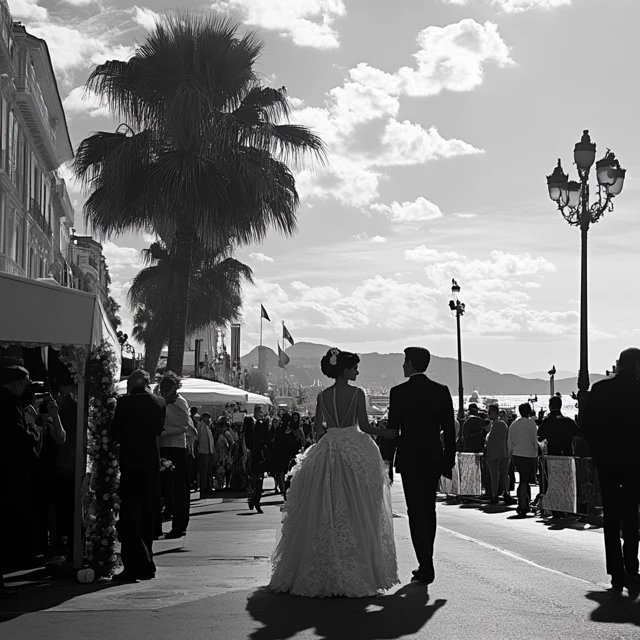
The Cannes Film Festival extends far beyond its glamorous red carpet and celebrity appearances. Behind the scenes, this prestigious event serves as a crucial hub for film industry professionals, cultural exchange, and artistic recognition that shapes global cinema throughout the year.
Industry Significance
The Cannes Film Festival stands as a cornerstone of the global film industry. As one of the “Big Three” major European film festivals alongside Venice and Berlin, Cannes provides an unparalleled platform for film professionals worldwide. The festival attracts more than 4,000 journalists and over 2,000 media outlets from approximately 90 countries, with 280 photographers and 80 TV channels documenting film crews on the iconic red carpet.
The festival’s significance extends to its role as a global showcase for cinema. Film producers launch new projects while distributors acquire fresh content from around the world. This dynamic marketplace fosters cross-cultural connections and facilitates the discovery of emerging talent alongside established filmmakers.
The Marché du Film, established in 1959, operates as the business center of the festival. This film market brings together producers, distributors, exporters, and importers to discover, finance, and appreciate international film productions. Participants access an extensive catalog including mainstream, independent, genre films, documentaries, and animation. The market offers screenings of the Official Selection plus over 1,500 additional films, creating numerous business opportunities and networking events.
For European cinema specifically, Cannes serves as a critical venue for selling films based on artistic merit. The festival enables countries to showcase their cinematic identity and reinforces the association between European cinema and artistic quality. This positioning helps European films compete in a market often dominated by commercial Hollywood productions.
The Marché du Film provides infrastructure for film professionals to establish stands, book screenings across 33 available screens, and participate in conferences about industry innovations and trends. This concentration of industry forces creates extensive networking opportunities that contribute to the ongoing evolution and sustainability of the film sector.
Cannes also functions as a launchpad for awards contenders, with recent Palme d’Or winners like “Parasite” and “Anora” going on to win Best Picture at the Academy Awards. This connection between festival recognition and broader industry success demonstrates how Cannes shapes the trajectory of films in the global marketplace.
Cultural Impact
The cultural influence of the Cannes Film Festival resonates far beyond the film industry itself. The festival’s artistic prestige and glamour have established it as the most influential cinema event globally. For decades, Cannes has launched the careers of many groundbreaking filmmakers and continues to shape worldwide cinematic trends.
The festival’s symbolic power manifests in its iconic elements. The famous 24 steps covered in red carpet transform each spring into the center of the cinematic world. These stairs, located at the entrance of Le Palais des Festivals et des Congrès, represent the pinnacle of artistic achievement and cultural significance. Surmounted by the official poster weighing 145 kilograms, this staircase embodies the epic journey of seventh art cinema, showcasing films from directors across the planet.
The Palme d’Or trophy exemplifies the festival’s cultural significance. This award, inspired by the coat of arms of Cannes, weighs 118 grams and requires 40 hours of work by five artisans. The trophy carries certification as Fairmined, attesting to the ethical sourcing of gold from artisanal mines. This commitment to craftsmanship and ethical standards reflects the festival’s broader cultural values.
European cinema receives particularly meaningful exposure through Cannes. The festival helps shape national cinematic identities and reinforces associations between European film and artistic excellence. This cultural positioning impacts how audiences worldwide perceive and engage with European cinema.
The massive media coverage of Cannes creates unparalleled cultural visibility. The festival attracts stars and film professionals globally, generating exposure that promotes films to international audiences. This media attention extends the cultural reach of cinema beyond traditional boundaries.
Cannes also serves as a platform for cultural and social commentary. The festival has inspired fictional explorations in novels that use the event as a setting to address broader social issues. This meta-cultural dimension demonstrates how the festival has become a symbol that transcends its primary function.
The Cannes Film Festival maintains environmental awareness as part of its cultural identity. Sustainability initiatives include equipping 100% of the official car fleet with electric and hybrid vehicles. The concentrated layout of the Palais des Festivals et des Congrès encourages walking for accredited guests, who also receive free passes for Cannes public transport. These efforts reflect the festival’s engagement with contemporary cultural concerns beyond cinema itself.
Through its combination of artistic celebration, industry infrastructure, and cultural symbolism, the Cannes Film Festival continues to shape global cinema culture while adapting to changing societal values and technological evolution.
This Year’s Festival Highlights
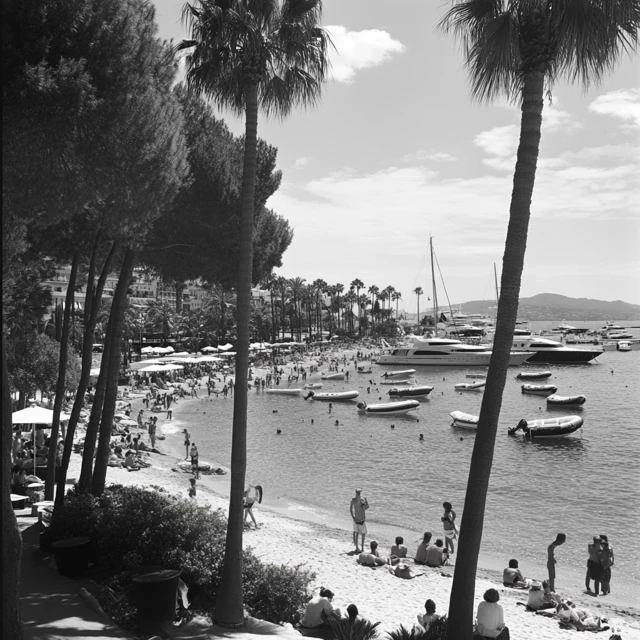
The 78th edition of the Cannes Film Festival will light up the French Riviera from May 13-24, 2025, featuring an impressive lineup of international cinema. Opening with Amélie Bonnin’s “Partir un jour” (Leave One Day), the festival promises 12 days of cinematic excellence spanning various genres from arthouse dramas to major studio productions.
Notable Films in Competition
Twenty-one films compete for the coveted Palme d’Or in the 2025 official selection, representing diverse storytelling approaches and directorial voices. Wes Anderson’s “The Phoenician Scheme” stands among the most anticipated entries, featuring an ensemble cast including Benicio del Toro, Michael Cera, Scarlett Johansson, and Tom Hanks. The narrative follows a nun and the daughter of the world’s richest man who become entangled in a dangerous global conspiracy.
Oliver Hermanus brings “The History of Sound,” a queer romance starring Josh O’Connor and Paul Mescal as lovers recording folk music in rural New England after World War I. The film explores themes of identity and creative expression against a historical backdrop.
Horror maestro Ari Aster returns to the festival circuit with “Eddington,” generating significant buzz among cinephiles familiar with his distinctive approach to unsettling narratives. His previous works established him as a boundary-pushing filmmaker, making his competition entry a focal point for horror enthusiasts and critics alike.
The international scope of the competition reflects Cannes’ commitment to global cinema. Iranian filmmaker Jafar Panahi presents “An Accidental Incident,” while Norwegian director Joachim Trier offers “Sentimental Value.” Spanish filmmaker Carla Simón brings “Romería,” and German director Mascha Schilinski presents “Sound of Falling.”
Other competition entries include:
- “Republic’s Eagles” by Tarik Saleh
- “The Mastermind” by Kelly Reichardt
- “Dossier 137” by Dominik Moll
- “The Secret Agent” by Kleber Mendonça Filho
- “La Petite dernière” by Hafsia Herzi
- “Fuori” by Mario Martone
- “Two Prosecutors” by Sergei Loznitsa
- “Nouvelle Vague” by Richard Linklater
- “Sirat” by Oliver Laxe
- “Renoir” by Chie Hayakawa
- “Alpha” by Julia Ducournau
- “Young Mothers” by the Dardenne brothers
This robust lineup continues Cannes’ tradition of showcasing films that often become critical darlings and awards contenders. Recent years have seen festival selections like “Parasite” and “Anora” go on to dominate the awards season, including Best Picture Oscar wins.
Outside the main competition, Tom Cruise returns to the Croisette to promote “Mission Impossible: The Final Reckoning,” three years after the triumphant reception of “Top Gun: Maverick” in 2022. His appearance underscores the festival’s dual identity as both an arthouse haven and a platform for high-profile studio productions.
Jury and Special Guests
French acting legend Juliette Binoche serves as Jury President for the 78th Cannes Film Festival, bringing her extensive cinematic expertise to the deliberation process. As an Oscar winner and previous recipient of Cannes’ Best Actress award, Binoche represents the artistic integrity the festival celebrates.
Robert De Niro receives this year’s honorary Palme d’Or, recognizing his monumental contributions to cinema across six decades. This lifetime achievement award acknowledges his transformative performances and collaborative work with directors like Martin Scorsese, Francis Ford Coppola, and Michael Mann.
The festival maintains its tradition of bringing together industry professionals from around the world, with nearly 39,000 attendees expected to climb the iconic 24 steps of the Palais des Festivals. Festival president Iris Knobloch emphasized this global perspective during the lineup announcement, noting that “For almost 80 years, the Cannes Film Festival has been in dialogue with the world, embodying a France that is bold, curious and open.”
Knobloch further addressed the festival’s cultural significance amid current global tensions, stating: “At a time when the temptation to turn in on oneself has never been so great, this message of openness and hope is fundamental. We are more aware than ever of the role played by the Cannes Film Festival through its cultural and media impact.”
Directors and casts of competition films traditionally attend their premieres, creating memorable red carpet moments that merge artistic achievement with celebrity presence. The 2025 festival anticipates appearances from Wes Anderson with his ensemble cast, Ari Aster, and the stars of other competition entries, generating significant media coverage that extends the festival’s reach beyond the film industry.
As the festival approaches its eighth decade, it continues to function as both a celebration of cinema’s highest artistic ambitions and a launching pad for films that define the year’s cinematic conversation. The 2025 edition balances established auteurs with emerging voices, maintaining Cannes’ position as a premier platform for discovering significant new works while honoring cinema’s rich heritage.
The Cannes Experience
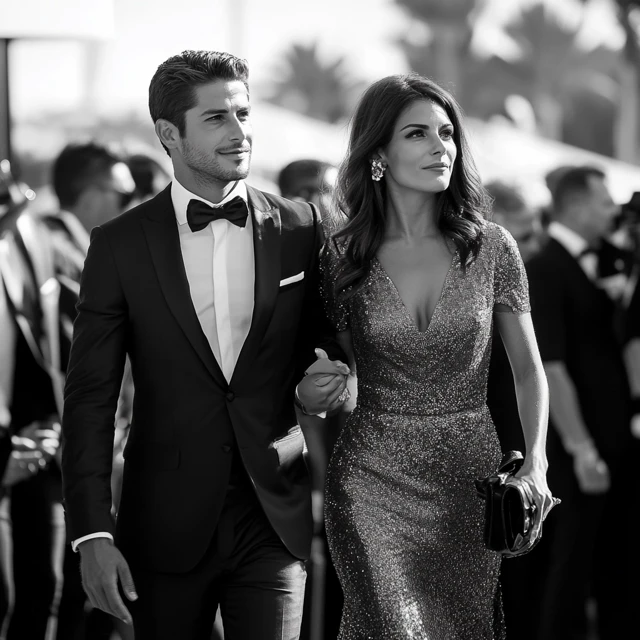
The Cannes Film Festival transforms the French Riviera city into a global cinema hub each May, attracting approximately 30,000 professionals and 5,000 journalists during its 12-day run. This prestigious event, recognized as the world’s most widely publicized cultural gathering, showcases new films from diverse genres and countries, creating an atmosphere where art, commerce, and celebrity converge.
The Red Carpet and Premieres
The iconic red carpet at Cannes creates unforgettable moments of cinematic celebration as film crews make their way up the famous 24 steps of the Palais des Festivals. These glamorous appearances are immortalized by 280 photographers and broadcast by 80 television channels from around the world. The festival’s most prestigious screenings take place in several formats:
- Gala Screenings: Films in the “In Competition” and “Out of Competition” categories receive the full red carpet treatment at the Théâtre Lumière, creating the festival’s most photographed and publicized moments.
- Midnight Screenings: These special gala events held at the Théâtre Lumière during midnight hours add an element of exclusivity and mystique to the festival program.
- Cannes Premieres: A dedicated section featuring films projected at the Salle Debussy that don’t compete for the main prize but still benefit from significant media attention.
The red carpet experience represents more than just glamour—it symbolizes cinema’s highest aspirations. The 24 steps, covered in their distinctive red carpet, become the center of the film world each spring, showcasing what festival organizers describe as “the epic of a seventh art of the highest quality with a selection of films made by directors from all over the planet.”
Festival Venues
The Cannes Film Festival utilizes several key venues that form the physical foundation of this celebrated cinematic event:
- Théâtre Lumière: Located within the Palais des Festivals et des Congrès, this main venue hosts the most significant screenings, including films competing for the Palme d’Or. Its 299-meter giant screen and exceptional acoustics provide an optimal viewing experience for official screenings.
- Salle Debussy: This secondary theater presents films from the “Un Certain Regard” section, “Cannes Premieres,” and select Short Films, offering a more intimate but still prestigious screening environment.
- Salle Buñuel: Dedicated primarily to the Cinéfondation section, this venue showcases shorts and medium-length works from film schools worldwide, along with some Short Films competing for the Short Film Palme d’Or.
- Macé Beach: The “Cinéma de la Plage” program transforms this public beach into an open-air theater, screening classic films and select new releases for the general public, often with special programs dedicated to film music.
- La Croisette: While not a screening venue itself, this famous boulevard lined with luxury hotels forms an essential part of the Cannes experience, hosting numerous festival events, meetings, and accommodations for industry professionals.
The concentrated layout of these venues within and around the Palais des Festivals et des Congrès promotes a pedestrian-friendly environment. Festival organizers emphasize sustainability by providing free public transport passes to all accredited guests and maintaining a 100% electric and hybrid vehicle fleet for official transportation.
Since 1983, the Palais des Festivals has served as the festival’s central hub, evolving significantly over several decades to meet the growing demands of this global event. Each year, nearly 39,000 professionals and festival-goers traverse its spaces, from the iconic Grand Théâtre Lumière to numerous meeting rooms and exhibition areas that host the business side of cinema during the festival period.
Cannes’ Global Influence
The Cannes Film Festival transcends mere entertainment events, functioning as a global cultural phenomenon that shapes cinema, fashion, and international relations simultaneously. Its influence extends far beyond the screening rooms and red carpet, creating ripple effects throughout the creative and business worlds.
Platform for International Cinema
Cannes Film Festival serves as the world’s most prestigious gathering point for global cinema, showcasing films from 56 different countries annually. The festival’s international reach is remarkable, attracting attendees from over 160 countries who converge on the French Riviera to participate in this cinematic celebration. This global representation transforms Cannes into a true melting pot of worldwide film culture.
The International Village exemplifies this global platform, hosting national and regional film institutions from more than 90 countries. This dedicated space provides smaller film industries and emerging markets with visibility they might otherwise struggle to achieve. Countries like Thailand, Argentina, and Morocco use this platform to showcase their unique cinematographic voices and establish their presence in the global film conversation.
Films premiering at Cannes gain immediate international attention, with media coverage amplifying their reach to audiences worldwide. The festival’s selection process is notoriously selective, with thousands of submissions narrowed down to a handful of films that represent the pinnacle of cinematic achievement. This curatorial approach ensures that filmmakers from diverse backgrounds have the opportunity to share their artistic visions on a global stage.
The festival’s structure actively promotes cross-cultural exchange through its programming decisions. By featuring films from six continents in its various sections, Cannes creates opportunities for artistic dialogue that transcends geographic and cultural boundaries. This international perspective has helped introduce Western audiences to filmmakers like Asghar Farhadi (Iran), Apichatpong Weerasethakul (Thailand), and Hirokazu Kore-eda (Japan), expanding the global cinematic landscape.
Impact on Film Distribution
The Cannes Film Festival fundamentally shapes global film distribution patterns, functioning as the premier marketplace for independent and art-house cinema. The Marché du Film, the festival’s integrated film market, brings together industry professionals from 140 countries who negotiate rights, secure financing, and form partnerships that determine which films reach audiences worldwide.
Over 4,000 films and projects are presented annually at the Marché, making it the epicenter of global film commerce during its run. Distribution deals signed at Cannes often determine the theatrical fate of films for the upcoming year, with bidding wars for promising titles setting the tone for international release strategies. This concentrated marketplace creates opportunities for independent filmmakers to secure distribution that might otherwise be impossible.
European cinema particularly benefits from Cannes’ influence on distribution channels. The festival serves as a crucial showcase for European films, highlighting both their artistic merit and commercial potential to buyers from around the world. This exposure helps European productions compete with Hollywood blockbusters in the global marketplace by emphasizing their distinctive artistic qualities and cultural perspectives.
The massive media presence at Cannes—with thousands of journalists covering the festival—provides invaluable publicity that distributors leverage when marketing films to audiences. A positive reception at Cannes can transform a small independent production into an international phenomenon, as demonstrated by films like “Parasite,” which parlayed its Palme d’Or win into global box office success and ultimate Oscar recognition.
The festival’s impact extends to emerging distribution platforms as well. Streaming services now join traditional distributors at the Marché du Film, creating new pathways for films to reach audiences beyond theatrical release. This evolution reflects Cannes’ ongoing adaptation to changing industry dynamics while maintaining its central role in determining which films receive global distribution.
Through this combination of artistic recognition and commercial infrastructure, the Cannes Film Festival continues to shape what films audiences see worldwide, functioning as both a tastemaker and market facilitator for global cinema. Its influence ensures that diverse cinematic voices can find their way to screens worldwide, enriching the international film landscape and connecting filmmakers with audiences across borders.
Conclusion
The Cannes Film Festival stands as cinema’s most influential global gathering where artistic vision meets industry power. From its politically defiant origins to becoming the premier platform for international filmmaking talent the festival has continuously evolved while maintaining its cultural significance.
With the iconic Palme d’Or representing the pinnacle of cinematic achievement Cannes continues to launch careers elevate diverse voices and shape distribution patterns worldwide. The festival’s red-carpeted grandeur masks its true purpose as both a marketplace of ideas and films.
As Cannes approaches its 78th edition the festival remains vital to cinema’s ecosystem adapting to technological changes while preserving the theatrical experience. It’s not merely an annual event but a living institution that reflects film’s past illuminates its present and shapes its future on the world stage.
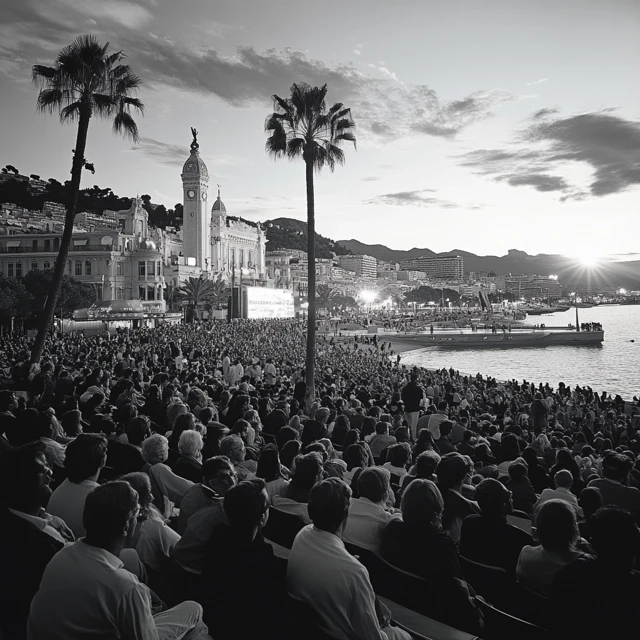
Frequently Asked Questions
What is the Cannes Film Festival?
The Cannes Film Festival is a prestigious annual cinema event held in Cannes, France, featuring an iconic red-carpeted staircase. Established as a response to political influences over the Venice Film Festival during the Mussolini and Hitler era, it has evolved into one of the world’s most celebrated film festivals and serves as a vital platform for international cinema.
When did the Cannes Film Festival begin?
Though planned to debut in September 1939, the inaugural Cannes Film Festival was canceled due to the outbreak of World War II. The festival officially launched in 1946 with 21 participating countries. Since then, it has grown into a prestigious celebration of international cinema spanning over seven decades of film history.
When is the next Cannes Film Festival?
The 78th edition of the Cannes Film Festival is scheduled for May 13-24, 2025. The festival will open with Amélie Bonnin’s “Partir un jour” (Leave One Day) and will showcase 21 films competing for the coveted Palme d’Or, featuring works from acclaimed directors like Wes Anderson and Oliver Hermanus.
What is the Palme d’Or?
The Palme d’Or is the highest honor at the Cannes Film Festival, introduced in 1955. This prestigious award recognizes cinematic excellence and has been awarded to landmark films like “Marty,” “The Piano,” “Barton Fink,” and recently “Parasite” and “Anatomy of a Fall.” Winning significantly elevates filmmakers’ careers and brings international recognition to diverse global voices.
How is the Cannes Film Festival organized?
The festival is divided into distinct sections managed by five separate organizations. The Official Selection includes competitive categories like “In Competition” (for the Palme d’Or), “Out of Competition,” “Un Certain Regard,” and “Cinéfondation.” Parallel sections such as “Critics’ Week” and “Directors’ Fortnight” provide platforms for emerging directors and innovative storytelling.
Who determines the awards at Cannes?
Awards are determined by internationally appointed juries composed of film industry professionals. Besides the Palme d’Or, other prestigious recognitions include the Grand Prix, Jury Prize, and individual achievement awards for acting, directing, and screenwriting. The Caméra d’Or recognizes outstanding debut films, while the Palme d’Or du Court Métrage honors exceptional short films.
Can the general public attend the Cannes Film Festival?
The festival is primarily invitation-only, catering to film industry professionals and press. However, there are limited opportunities for public participation, such as the “Three Days in Cannes” program for qualified applicants and the “Cinéma de la Plage” program, which offers free open-air screenings at Macé Beach for the general public.
What happens at the Marché du Film?
Established in 1959, the Marché du Film serves as the business center of the festival. It functions as the premier marketplace for independent and art-house cinema, attracting over 12,000 industry professionals. This dynamic marketplace facilitates networking, film sales, distribution deals, and showcases international productions, fundamentally shaping global film distribution patterns.
How does Cannes impact global cinema?
Cannes shapes cinema worldwide by providing immediate international attention to premiering films from over 56 countries. The festival’s selective curation ensures diverse filmmakers gain visibility, promoting cross-cultural exchange. Its massive media presence (attracting 4,000+ journalists) provides invaluable publicity that can transform small productions into international successes.
Who will be the Jury President for the 2025 festival?
French acting legend Juliette Binoche will serve as Jury President for the 2025 Cannes Film Festival. Meanwhile, Robert De Niro will receive this year’s honorary Palme d’Or in recognition of his significant contributions to cinema throughout his illustrious career.
Jason writes for AMW and specializes in emerging omnichannel storytelling, AI tools, and the latest marketing strategies. His insights on the different ways businesses can leverage digital transformation have helped clients maximize their marketing effectiveness. Jason brings a practical approach to complex marketing challenges, translating technical innovations into actionable business solutions.

